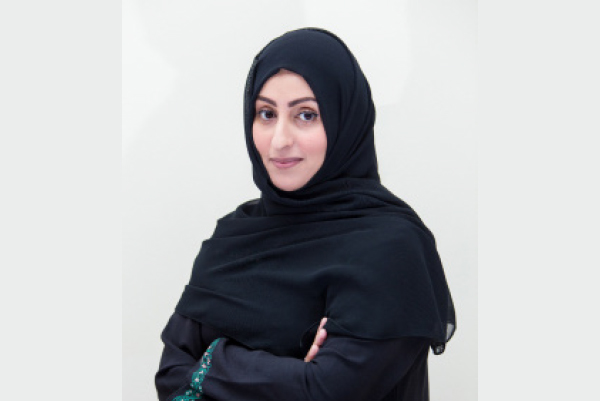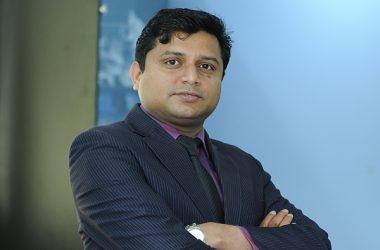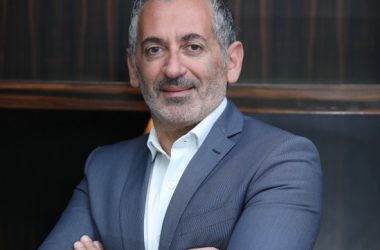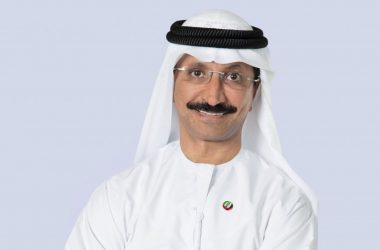Striving to satisfy the ambitious goals of the emirate’s Vision 2030, Abu Dhabi Water & Electricity Authority has defined a comprehensive five-year IT roadmap to ensure it remains one of the UAE’s top critical infrastructure providers.

Tasked with delivering water and electricity to over 500,000 Abu Dhabi residents, Abu Dhabi Water and Electricity Authority (ADWEA) is responsible for every stage of the supply chain for the production, transmission and distribution of Abu Dhabi’s water and power. The Authority wholly owns Abu Dhabi Water and Electricity Company (ADWEC), Abu Dhabi Transmission Company (TRANSCO) and Al Ain and Abu Dhabi Distribution Companies (AADC and ADDC), as well as having controlling stakes in a selection of production companies.
The IT function in the ADWEA Group of companies is compelled to align with the business, and implement its strategy. The Authority is also providing a selection of advanced e-services to commercial and domestic customers in the emirate, using a complex IT infrastructure.
The ADWEA IT strategy has also been developed over time, in line with the aims of the Abu Dhabi Economic Vision 2030.
Abu Dhabi Economic Vision 2030 is a comprehensive roadmap for the emirate’s economic progress. By 2030, Abu Dhabi intends to build a sustainable and diversified, “high value-added” economy that is not only well integrated into the global economy, but also provides more accessible opportunities for all its citizens and residents. “We are a critical organisation in Abu Dhabi, and an enabler to the Economic Vision 2030 as the sole provider of power and water,” Hamda Al Ameri, IT projects manager, ADWEA, says. “ADWEA has an important part to play to ensure that Abu Dhabi is a sustainable, diversified economy that encourages enterprises and entrepreneurship. We are aiming to be among the top quartile of performers in the world for water and electricity utilities by 2020. Our mission is to ensure their sustainable supply via teamwork, stakeholder focus, integrity and corporate citizenship. We want to stay at the forefront of technology to enable better customer service for the people of Abu Dhabi.”
ADWEA’s IT strategy operates under five-year roadmaps, and is currently one year into the 2015-2020 cycle. “We have developed a comprehensive IT strategy for ADWEA group of companies for 2015-2019, that features prioritised, strategic IT initiatives that are linked to the long-term business strategies of the group,” Al Ameri says.
Crucial to ADWEA’s IT strategy is its redefined set of IT governance policies. ADWEA’s vision of aligning itself to world class utilities called for a formal review of how technology could help it reach this goal. This had implications in many areas of IT including the vision, strategy, roadmap and the delivery IT service provision model.
“We have implemented three layers of IT governance,” Al Ameri says. “Our executive layer comprises the IT steering committee which features key decision makers, and is the topmost layer. Second is the operating layer, which features the group IT managers for day-to-day IT operations decisions and management. This is followed by the Portfolio layer, which features the monitoring and health of the various programs and projects undertaken by the ADWEA group IT function .”
The link between digital and physical assets is of critical importance in the utilities industry. With that in mind, one of the most important aspects of ADWEA’s strategy is integrating its IT systems with its operational technology (OT) – water and electricity – network systems.. “We want to provide data-centric computing that enables us to make necessary adjustments to our enterprise and industrial operations,” Al Almeri says. “IT/OT convergence will enable more direct control and more complete monitoring, with easier analysis of data from our complex enterprise systems and lead to real time decissions.”
ADWEA has embarked on a new IT strategy formulation in which a current state assessment was performed to understand existing and future business priorities, applications coverage, infrastructure adequacy and the overall IT operating model maturity. During this activity, all relevant business personnel were interviewed and business strategy documentation was reviewed in order to capture the short and mid-term business needs and desires.
ADWEA’s IT leadership team has also worked extensively to define an extensive list of SLAs to ensure that its operations and business applications availability, application development, and security layers meet the industry best practices and standards. ITIL (Information Technology Infrastructure Library) is the framework deployed for service management, with ADWEA’s complex IT Infrastructure monitored electronically by a set of advanced tools that automatically detects and polls every addressable component attached to the IT environment. This reports potential incidents to IT staff via SMS and email, before problems cause service interruptions. “This model ensures best practices for service management,” Al Ameri says. “Incidents are categorised into three levels, and the highest category incidents are attended immediately .”
One critical aspect that ADWEA takes very seriously is its IT security. ADWEA has undertaken comprehensive work to comply with NESA (National Electronic Security Authority) and Abu Dhabi Systems and Information Centre (ADSIC) information security standards
“The basic building block of our IT governance framework is a comprehensive electronic library of IT policies ranging from security policy designed to protect all aspects of IT, to an acceptable use policy that includes guidelines regarding the protocol of electronic communications,” Al Ameri says. “IT policies dictate the rules that ADWEA IT has put in place to manage, monitor, operate and protect the IT environment.”
Looking forward, Al Ameri is excited about the prospects and progress of the current five-year plan. “We are well on target to achieve our aims of sustainability, customer focus and operational excellence,” she says. “The underlying infrastructure is primed to support our environment.”





